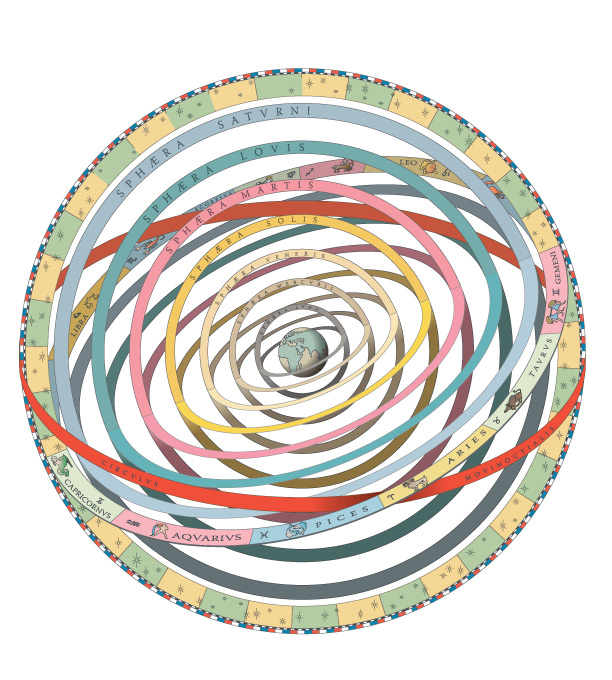
Think back to the viewpoint of someone living in a small village many thousands of years ago, when they would have imagined their world to be fairly small and flat, and covered by a domed sky [Section 2.1.1]. Try the following discussion to think about how they would have viewed the “earth.”
Group Discussion
The Meaning of “Earth”
The word “earth” has at least two meanings: It can refer to our planet Earth, and it can refer to dirt or soil. Do these two meanings seem related? Which one do you think came first? Discuss in small groups, and decide how you think the meanings evolved with time.
This can be a very brief discussion, but should be illuminating to students, most of whom probably never made the connection between “earth” as dirt and “Earth” as a planet. Key points: In the most ancient times, as in the small village scenario above, “earth” (and its equivalent in ancient languages) was simply the ground we walked upon; people of those times would have had no conception of Earth as a planet. This began to change as the Greeks developed the celestial sphere model in which a spherical Earth resided at the center, though Earth was still not a “planet” because it was mistakenly assumed to be the center of the universe. Only after we learned that Earth goes around the Sun did we have our modern conception of Earth as one of many worlds.
As you probably realized during your discussion, “earth” originally referred to the ground or dirt beneath our feet. Only later, when the ancient Greeks developed the celestial sphere model [Section 2.1.2], did it start to refer to our entire world. Even then, as we discussed in Section 2.4, Earth was not yet considered a “planet” because it was thought to be the center of the universe. Our modern conception of Earth as a planet [Section 1.1.2] therefore dates back only a few hundred years, to the time when humans finally established that Earth goes around the Sun.
We’ve already discussed how the ancient Greeks used the model we call the celestial sphere to explain most of the motions they observed in the sky. But we have not yet talked about how they realized that Earth is round, nor have we talked about why they didn’t take the next step, and realize that Earth orbits the Sun. Those are our tasks in this section.
Section Learning Goals
By the end of this section, you should be able to answer the following questions:
- How did the ancient Greeks learn that Earth is round?
- Why didn’t the ancient Greeks realize that Earth orbits the Sun?
Before you continue, take a few minutes to discuss the above Learning Goal questions in small groups or as a class. For example, you might discuss what (if anything) you already know about the answers to these questions; what you think you’ll need to learn in order to be able to answer the questions; and whether there are any aspects of the questions, or other related questions, that you are particularly interested in.
Connections—Etymology
Terra
The Latin root terra also means “earth,” and like the word “earth,” it has multiple meanings. For example, a “territory” is a region of land, a “terrace” can refer to either a patio or a series of raised strips of land used for farming, “subterranean” means underground, and “terrestrial” can refer either to something that lives on land (as opposed to the sea) or it can mean “Earth-like” in the context of other planets. Can you think of other words that use this same root?